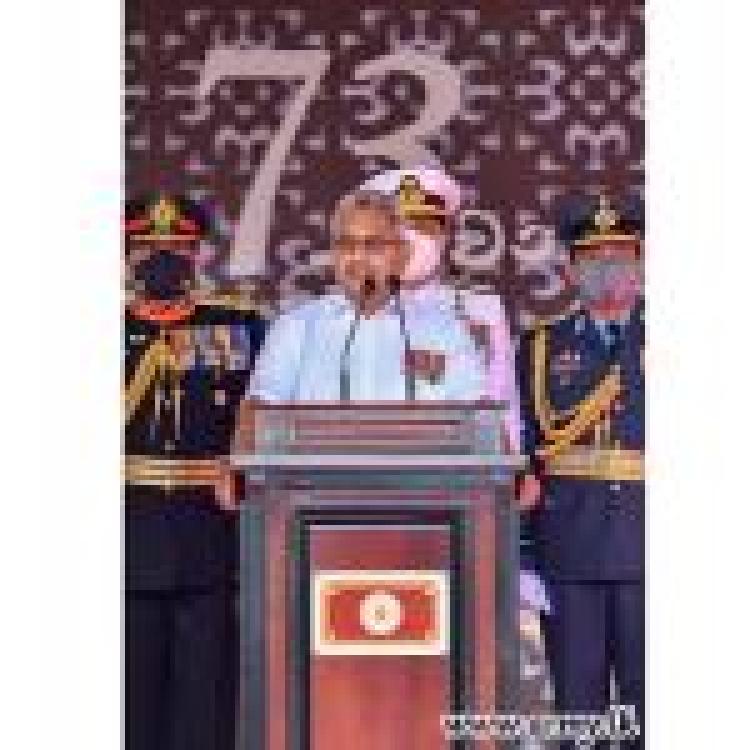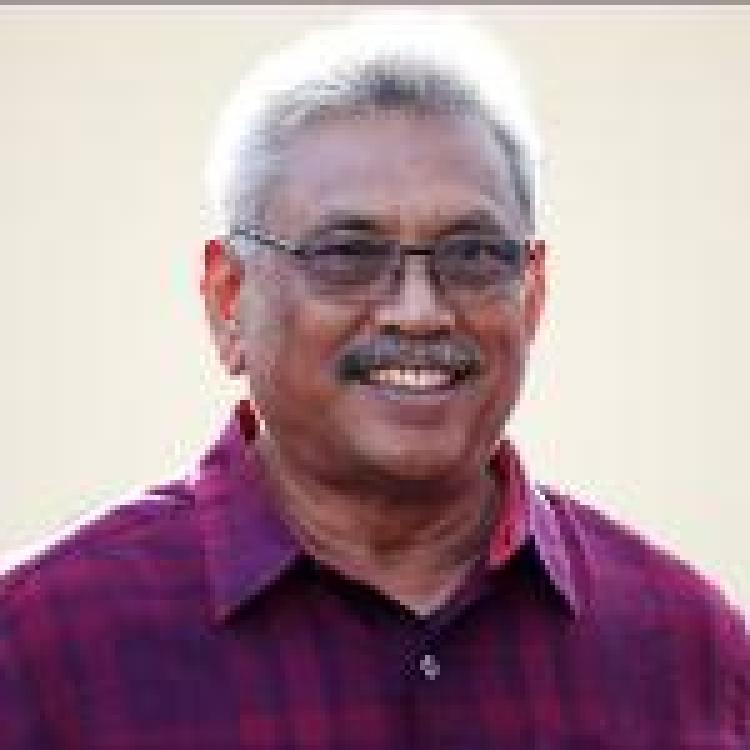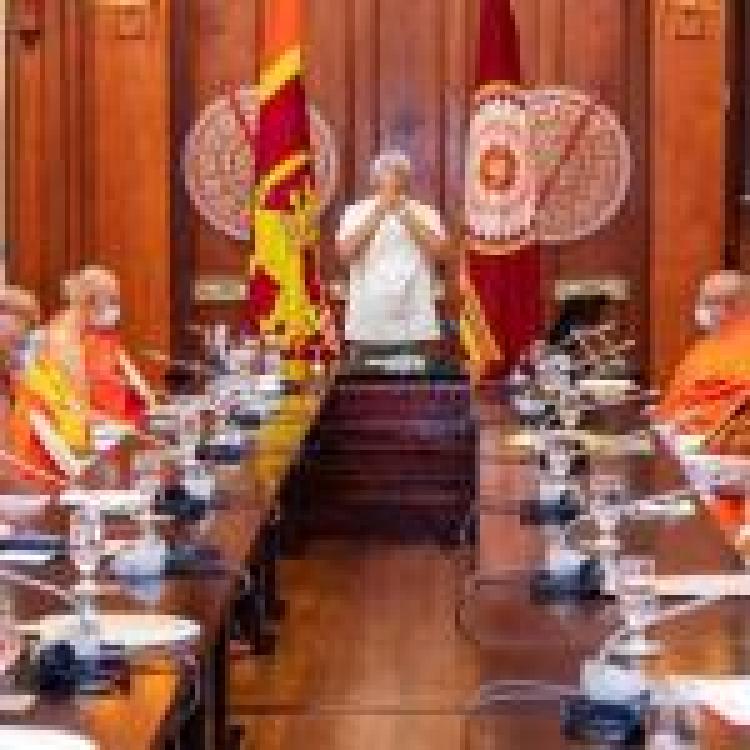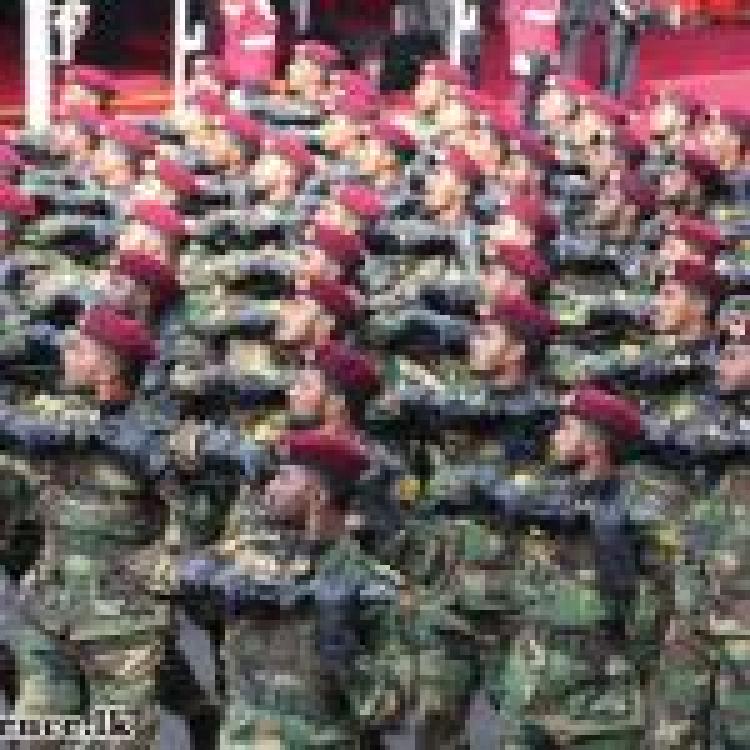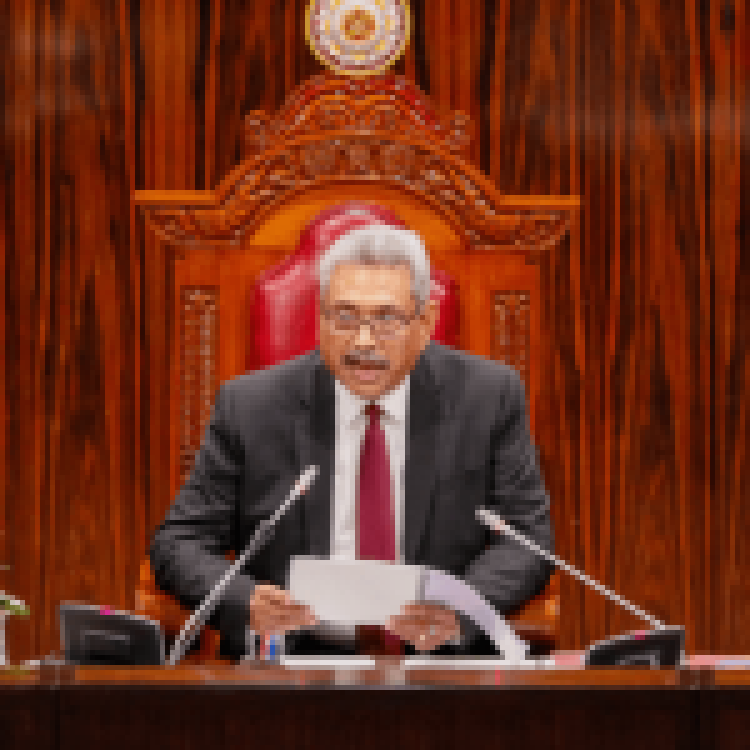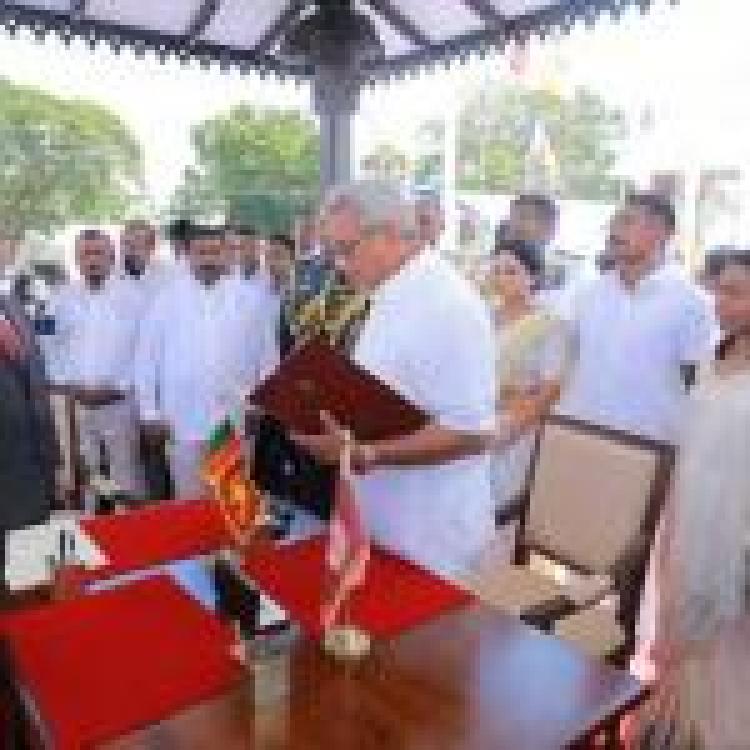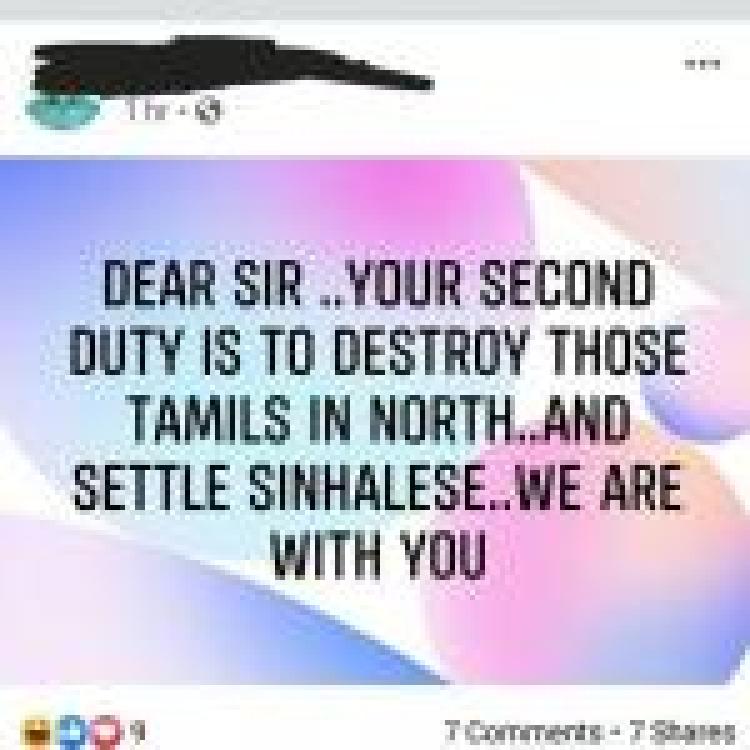.jpg)
A grand ceremony was held in Sri Lanka this week, as dozens of political leaders from across the south accompanied Sinhala Buddhist monks and military generals at the unveiling of a newly constructed Buddhist stupa built to honour Sri Lankan troops.
Sri Lanka’s president Gotabaya Rajapaksa and his elder brother, prime minister Mahinda Rajapaksa, were both chief guests at the ceremony, which was attended by senior Buddhist clergy members, the leader of Sri Lanka’s opposition, parliamentarians, military officials and ambassadors, according to the Presidential Media Division.
.jpg)
.jpg)
.jpg)
The newly constructed stupa, which the Sri Lankan army labelled “gigantic” and “colossal”, is reportedly the second largest on the island and stands at a towering 282.6 feet high. The only other stupa taller than this is the Jetavanarama stupa, which was built some 1,700 years ago. The pinnacle of the latest construction however, is reportedly finished with 1,895 gemstones, gold and pearls.
.jpg)
Construction of the Buddhist monument began in 2010, just one year after the end of the armed conflict which saw Sri Lankan troops bomb hospitals and kill tens of thousands of Tamil civilians.
Then Sri Lankan president Mahinda Rajapaksa initiated the project reportedly to “pay the nation’s gratitude to the war veterans… who maimed to usher peace to the motherland while eliminating three-decade long conflict”.
The Sri Lankan military was tasked with construction of the Buddhist monument, as they have done for several other Buddhist sites across the North-East. Alongside what the army termed “generous financial support… from all corners of the world”, the stupa took years to complete.
“The engineering of a Stupa reflects a profound theistic act, prolific perspective of the country and also a measure to recall war heroes, as a tribute to their noble sacrifices,” said Sri Lanka’s defence ministry.
The ceremony on Thursday was hailed by the army, who declared that it “heralds a new epoch in the revival of Buddhist legacy in the country”.
.jpg)
“It is the duty of future leaders to safeguard the hard won peace and to ensure the safety of war veterans," said Mahinda Rajapaksa, as he addressed an audience that also sat his younger sibling, Shavendra Silva and Kamal Gunaratne – all of whom stand accused of mass atrocities.
“Every time people worship the Stupa, blessings will be invoked on all war heroes who sacrificed their lives to bring peace to the country and to all those who died during the war,” he continued.
Gunaratne had a more unusual role to play in the ceremony – composing a song dedicated to the stupa, which was played for the audience “to bestow merit on true sons of Sri Lankan soil”.
.jpg)
Several Sri Lankan leaders, including president Gotabaya Rajapaksa went on to seek the blessings of the Buddhist clergy, falling to their knees before them.
.jpg)
The latest unveiling comes just weeks after the younger Rajapaksa announced the creation of the controversial “One Country, One Law” task force, headed by a convicted Sinhala Buddhist extremist monk.
The Rajapaksa’s Sinhala Buddhist credentials have never been in doubt, with Gotabaya repeatedly reiterating that he would lead the government based on “Buddhist philosophy” and frequently paying tribute to the powerful clergy.The large scale ceremony also comes as the security forces have launched a crackdown in the Tamil North-East in the run up to Maaveerar Naal, a day on which Tamil around the world pay tribute to those who died in the liberation struggle. Last week, the government announced new legislation that will restrict the number of people allowed to attend public gatherings, supposedly due to the risk of coronavirus transmission.
Yet Rajapaksa was seen at the ceremony yesterday in the midst of the crowd with his hands clasped in prayer. He was the only person not wearing a face mask.
.jpg)
See more from the Sri Lankan army here, the defence ministry here and the president's media division here.

